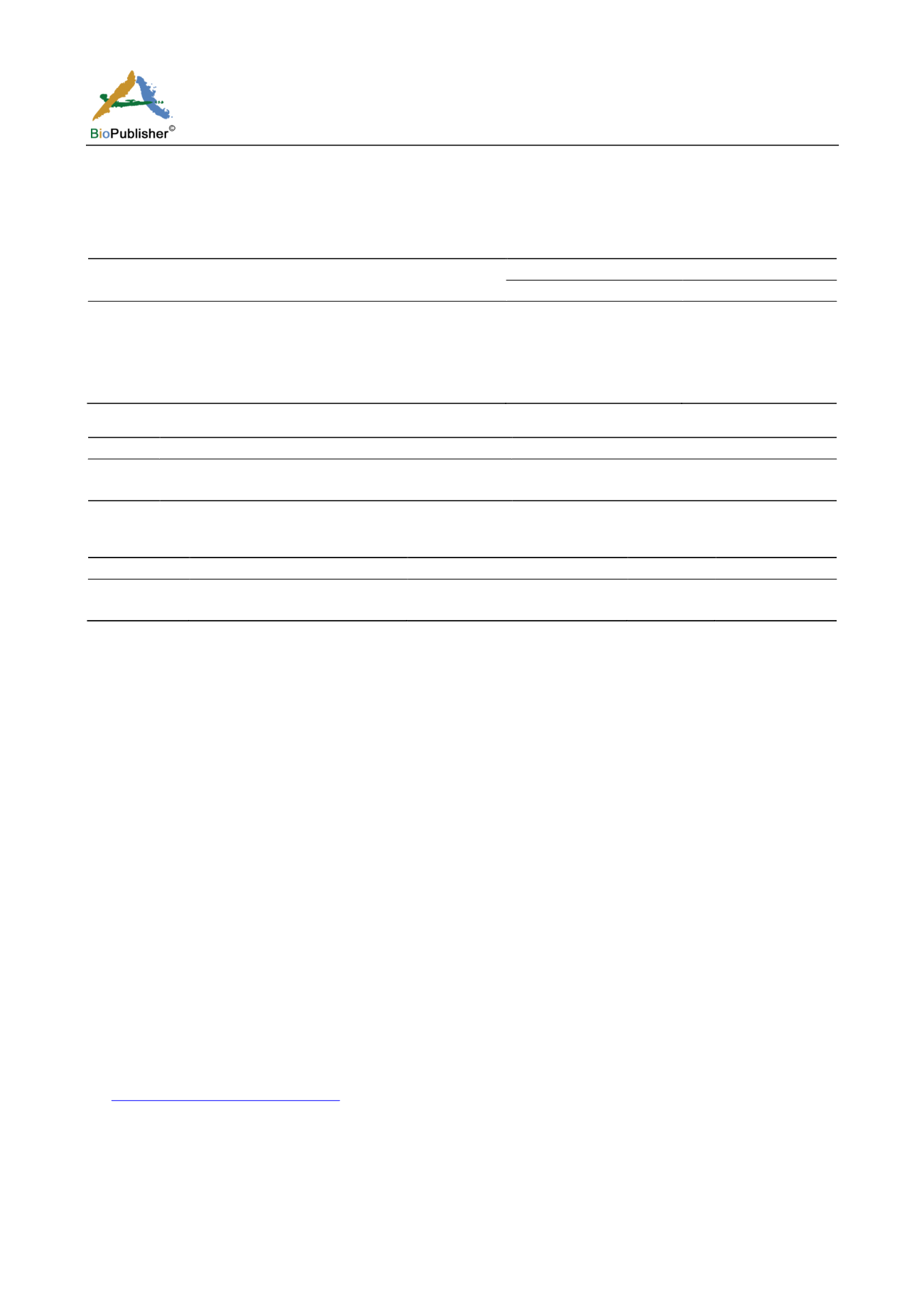
International Journal of Marine Science, 2017, Vol.7, No.9, 76-87
84
as exemplary levels for confident levels of the metals studied. Table 9 displays that known foolproof levels of the
Joint FAO/WHO Expert Committee on Food Additives (JECFA) and Council of Europe for both Cu and Zn.
PTWI levels seeing a 70 kg body weight of an grown person for Cu and Zn.
Table 8 The tolerable values of Cu and Zn in the fish (mg/kg wet wt.)
Table 9 Internationally accepted safe levels for Cu and Zn
Metals
Standard
References
Cu
PTWI of 3.5 mg per kg body wt. per week
Anonymous 1996, Anonymous 2001b
Zn
PTWI of 7 mg per kg body wt. per week
Table 10 Estimated Weekly Intakes (EWI) and Daily Intakes (EDI) of Cu and Zn in dorsal tissue of
K. pelamis
from Karachi fish
harbor of Arabian Sea
Metals
PTWI (mg/week/70 kg body wt.)
PTDI (mg/day/70 kg body wt.)
EWI
EDI
Cu
245
35
0.222
0.032
Zn
490
70
0.240
0.034
According to the current study results Estimated Weekly Intake (EWI) and Estimated Daily Intake (EDI) for a 70
kg person weight were submitted in Table 10 and were incorporated with standards in Table 9 for evaluation of
these metals in
K. pelamis.
The Joint FAO/WHO Expert Committee on Food Additives set PTWIs for both Cu
and Zn were had in Table 9, which was tantamount to 245 and 490 mg/week for a 70 kg person, respectively. The
main per diem fish consumption in Pakistan is 5 g per individual (Anonymous, 2010b). It is withal equal to 35
g/week. By calculating the averages of weekly fish eaten in Pakistan and the most Cu and Zn values in skipjack
tuna, weekly entrance counted per body for these metals in edible muscles of
K. pelamis
. As it can be deduced out
of the Table 10, the evaluated EWIs of both Cu and Zn in the current work is rather under the approved safe
levels.
4 Conclusion
The present study had for objective to measure levels of the metals namely Fe, Mn, Cu and Zn in skipjack tuna (
K.
pelamis
) from the Karachi coast between 2006 and 2011. The means levels of these metals varied depending on
seasons. The weekly intakes of Cu and Zn per kg of person amounts not passed over the Provisional Tolerable
Weekly Intake (PTWI) established. The heavy metal concentrations of skipjack tuna in Karachi fish harbour of
Arabian Sea do not present any danger to people consumption. These information ensure a beneficial reference
line to gage essential these metals any oncoming alters in local pollution. It is also suggested that the commercial
fish used as pollution bio-indicators for assessment of environmental health of coastal areas.
References
Abdullah A.R., Tahir N.M., Tong S.L., Hoque T.M., and Sulaiman A.H., 1999, The GEF/UNDP/IMO Malacca Straits Demonstration Project sources of
pollution, Marine Pollution Bulletin, 39: 229–233
Ahmed Q., and Bat L., 2015a, Heavy metal levels in
Euthynnus affinis
(Cantor, 1849) Kawakawa fish marketed of Karachi fish harbour, Pakistan and potential
risk of human health, J. Black Sea/Mediterranean Environment, 21(1): 35-44
Ahmed Q., and Bat L., 2015b, Accumulations of Zn, Ni, B, Al and Co in
Megalaspis cordyla
from fish marketed by Karachi fish harbor of Pakistan,
International Journal of Fisheries and Aquatic Studies, 2(4): 204-207
Standards
Metals
Cu
Zn
Anonymous (1995a) Turkish Legislation
20
50
Anonymous (1995b) The Food Safety (Fish Product)
20
50
Anonymous (2001a) Georgian Food Safety
10
40
Anonymous (2002a) Turkish Food Codex
20
50
Anonymous (2002b) Russian Federation
10
40


